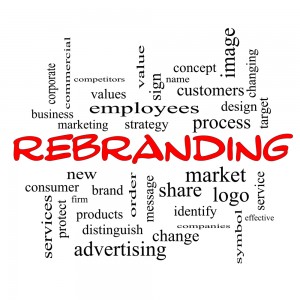 Do you want to drink a venti double mocha skinny chai latte? Do you even know what that is? I don’t. We found in a customer survey that 70% of shoppers were also confused by the choices (and their obscure names) on store’s café menu.
Do you want to drink a venti double mocha skinny chai latte? Do you even know what that is? I don’t. We found in a customer survey that 70% of shoppers were also confused by the choices (and their obscure names) on store’s café menu.
Resisting the urge to add customer choice allows shoppers to enjoy more time savouring their coffee and less time “playing coffee Cluedo”. While there may be some customers who want the complicated drink names, (it’s not that important to them) the majority would prefer simplicity.
A recent research shows that less choice more often than not leads to a lower effort service experience. When customers are faced with outcomes for a service experience, 84% chose something other than choice, a low-effort experience.

 Demanding customers, fierce competition, breathtaking technological innovation, etc. These are the realities of today’s global marketplace; realities that have changed forever the way we do business, especially the way we sell.
Demanding customers, fierce competition, breathtaking technological innovation, etc. These are the realities of today’s global marketplace; realities that have changed forever the way we do business, especially the way we sell. The importance of consistency in business seems so basic as to not need discussion. Yet many companies, especially smaller ones, operate in a day-by-day, case-by-case fashion that is disorganised, undisciplined and certainly inefficient.
The importance of consistency in business seems so basic as to not need discussion. Yet many companies, especially smaller ones, operate in a day-by-day, case-by-case fashion that is disorganised, undisciplined and certainly inefficient. Packaging plays an important role as a medium in the marketing mix, in promotion campaigns, as a pricing criterion, in defining the character of new products, as a setter of trends and as an instrument to create brand identity and shelf impact in all product groups.
Packaging plays an important role as a medium in the marketing mix, in promotion campaigns, as a pricing criterion, in defining the character of new products, as a setter of trends and as an instrument to create brand identity and shelf impact in all product groups. Brand names, logos, and slogans are integral parts of any company’s marketing message. All have the same aim: to make consumers react positively to a product or a business. Our research shows, however, that many slogans backfire—for example, causing consumers to spend money when they’re told they can save, or vice versa.
Brand names, logos, and slogans are integral parts of any company’s marketing message. All have the same aim: to make consumers react positively to a product or a business. Our research shows, however, that many slogans backfire—for example, causing consumers to spend money when they’re told they can save, or vice versa. According to a recent study, 58% of business presentations are deemed to be too long, uninteresting and lacking relevant information.
According to a recent study, 58% of business presentations are deemed to be too long, uninteresting and lacking relevant information. In today’s image-conscious society, everything is judged first by how it looks. Rebranding has become the « cure du jour » for everything from sluggish sales to increased competition and outdated products. So how well do these makeovers work?
In today’s image-conscious society, everything is judged first by how it looks. Rebranding has become the « cure du jour » for everything from sluggish sales to increased competition and outdated products. So how well do these makeovers work? Marketers surpass consumers in their daily use of e-mail, texting and social platforms. A whopping 93 percent of marketers have made a purchase as a direct result of an e-mail marketing message, while only 49 percent of online consumers have done so.
Marketers surpass consumers in their daily use of e-mail, texting and social platforms. A whopping 93 percent of marketers have made a purchase as a direct result of an e-mail marketing message, while only 49 percent of online consumers have done so. So you want your website to make you look big. More power to you. But the business experts I talked to recently say small is cool with customers, too.
So you want your website to make you look big. More power to you. But the business experts I talked to recently say small is cool with customers, too. As a general concept, research is the process of gathering information to learn about something that is not fully known. Nearly everyone engages in some form of research.
As a general concept, research is the process of gathering information to learn about something that is not fully known. Nearly everyone engages in some form of research. These days it is rare to find a business niche that is not already over saturated, however you don’t need to come up with a new concept to be different. Little tweaks here and there can make you stand out from the crowd and give you a great chance to be successful from the first day.
These days it is rare to find a business niche that is not already over saturated, however you don’t need to come up with a new concept to be different. Little tweaks here and there can make you stand out from the crowd and give you a great chance to be successful from the first day. We’ve all witnessed it – the seemingly overnight success of some startups that begs the question “what am I doing wrong here?” Is it the idea? The timing? The commitment? Why do some companies transform into breakout brands, while others struggle along?
We’ve all witnessed it – the seemingly overnight success of some startups that begs the question “what am I doing wrong here?” Is it the idea? The timing? The commitment? Why do some companies transform into breakout brands, while others struggle along?